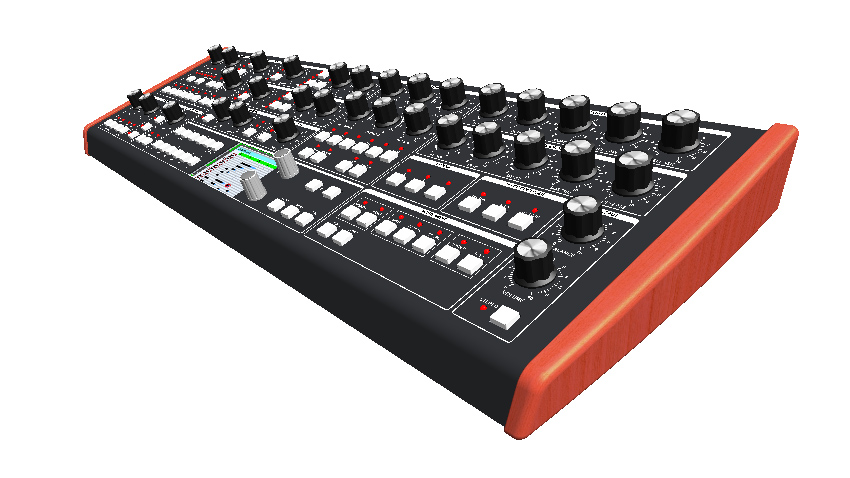The Synthex saga continues with Synthex 2
The original isn't being revived, but a successor is in the works

Following the failure of a crowdfunding campaign that was set up to revive the original Elka Synthex, Mario Maggi - designer of the original synth - has released details of a new instrument that he's calling the Synthex 2.
As Mario explains - and its name and specs imply - this isn't a recreation of the Synthex but a "totally new design" that uses contemporary technology. You can expect four versions - a 61-note keyboard, a tabletop module, a rack module and a "portable expander" - though when any or all of these will appear and how much they'll cost is anyone's guess.
Indeed, the spec list you can check out below is very much preliminary, and could change prior to the unspecified launch date.
Keep abreast of developments on the Synthex 2 website, where you can actually pre-order one of the models (though this really just amounts to registering your interest by sharing your email address).
Synthex 2 preliminary specs
Polyphony
- 16 Voices
Versions
- 61-note-keyboard
- Keyboard-less tabletop
- 1 Rack Unit expander
- Portable expander
Keyboard
- 61-note-keyboard FATAR TP-8 weighted with Key Velocity and Channel Aftertouch
Joystick
- Freely assignable bipolar XY axis
LCD Display
- 854 x 480 pixels - 5 inch LCD colour display for advanced editing of control panel and additional parameters
Voice Layering
- Whole Mode with 16 voice polyphony
- Split Mode with Upper and Lower parts, 8 voices each
- Double Mode with Upper and Lower parts, 8 voices each
- Unison Mode with variable voice number
Oscillators
- 2 Oscillators per voice
- Extended cross modulation between oscillators
- High number of available waveforms
Filter
- Multi-mode filter with extended filtering modes
Waveshapers
- PRE Filter Waveshaper
- POST Filter Waveshaper
- Chorus
- Full set of editable parameters
Envelope Generators
- 8 EGs per voice
- 8 segments per each EG
- Each segment is freely assignable to Note On or Note Off events
- Each EG can be used for LFO level shaping
Wide range LFOs
- 8 LFOs per voice
- Each LFO output can be shaped with EG
Sequencer
- LCD based quick programming/editing
- 4 polyphonic tracks
- Step by step or real time recording mode
- Internal TTL Sync Output
- External TTL Sync Input
- MIDI Sync
Arpeggiators
- Independent Arpeggiators for Lower and Upper parts
- Arpeggiators can be used in combination with the internal Sequencer
Rear Panel
- On/Off Switch
- 18V DC IN for external PSU
- USB-B connection for a PC editor
- RJ45 for external expansion box (CV/Trigger/Gate)
- MIDI In
- Midi Out
- Sync In TTL
- Sync Out TTL
- CV1 In
- CV2 In
- Expression Pedal 1
- Expression Pedal 2
- Upper Left Audio Out
- Upper Right Audio Out
- Lower Left Audio Out
- Lower Right Audio Out
Want all the hottest music and gear news, reviews, deals, features and more, direct to your inbox? Sign up here.



I’m the Deputy Editor of MusicRadar, having worked on the site since its launch in 2007. I previously spent eight years working on our sister magazine, Computer Music. I’ve been playing the piano, gigging in bands and failing to finish tracks at home for more than 30 years, 24 of which I’ve also spent writing about music and the ever-changing technology used to make it.